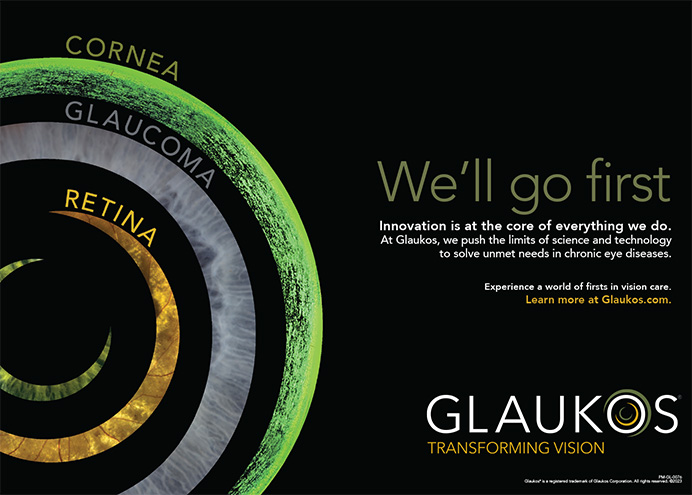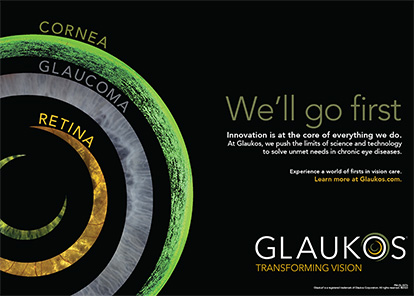The FDA's approval of CK for patients aged 40 years or older who require +0.75 to +3.0 D of hyperopic correction does not tell refractive surgeons all they need to know for effective patient selection for this procedure. For instance, I have found that patients between 40 and 45 years of age are not as successful CK candidates as those aged 45 years and older. In fact, my ideal patients have been 55 to 65 years of age. Additionally, the best CK candidates generally have enjoyed good vision for most of their lives, then developed a need for reading glasses in their mid-40s, and transitioned to bifocal lenses in their 50s. My patient population also includes a new group of patients I am now treating: the plano presbyopes.
The challenges for the surgeon offering CK are to understand candidates far different than those interested in LASIK and adapt his screening methods and mindset accordingly.PATIENT MINDSET
At the educational seminars I offer, I frequently poll the audience and find that only one or two of the 20 to 30 people present have had a routine eye examination in the past 5 years. Until this moment, these individuals have not needed to consider ocular surgery. These individuals have always enjoyed excellent eyesight, and they consider their changing vision to be a dramatic sign of aging.
Unlike their younger LASIK counterparts, who are interested in 20/15 vision, CK candidates only seek to reclaim some of the freedom they once had. They want to read without glasses, but distance vision is almost a nonissue. Many of these individuals have not been bothered by 20/40 or 20/60 distance vision. The prospect of a major improvement in reading vision plus the “bonus” of enhanced distance vision excites them (Figure 1).
Safety
It is important to recognize CK candidates' aversion to risk. According to demographic information, this patient population numbers roughly 45 to 50 million people, and the vast majority have not and would not consider laser treatment due to safety concerns.1 If there is any risk—no matter how small—of a disastrous outcome from the surgical procedure offered, these individuals will not proceed. For that reason, safety is the primary issue for the refractive surgeon to address. Candidates respond to the idea of CK, because the procedure has an excellent safety profile and entails no cutting, lasers, or involvement of the visual axis.
Efficacy and Simplicity
The second most important issue for CK candidates is procedural efficacy. They consider surgery to be an investment in their vision. Although these individuals will not hazard their personal safety, they will accept some chance that the procedure will not be effective. The 90% success rate of CK fits their model of a good risk.
The simplicity of the procedure is its third major selling point. Candidates like that CK usually lasts approximately 1.5 to 2.5 minutes per eye and requires eye drops but no sedatives. They also appreciate being able to go home once the procedure is complete and quickly enjoy the benefits of the procedure. They are tolerant of the minor discomfort that approximately 50% of my patients have experienced for the first 24 postoperative hours.
PATIENT SELECTION
One of the most effective communications and screening strategies I have found is the “try-it-on” approach in the examination lane. In my pocket, I carry four trial lenses, which represent the four options for refractive correction with CK: eight, 16, 24, and 32 treatment spots. I ask patients to try CK by holding up the lenses and judging how they like the correction they achieve. They respond favorably to this approach, which lets them test a reading correction in one eye and a distance correction in the other and then permits them to switch the corrections. This method also aids me in evaluating whether CK is a viable alternative for a candidate.
SURGEON'S MINDSET
When I began offering CK, I often found that it would not cross my mind to discuss the procedure with 55-year-old low hyperopes visiting my office for a routine examination. When such individuals inquired specifically about CK, I realized that I needed to adjust my own mindset on candidate evaluation.
I have also found that CK requires more thinking on my part than does LASIK. With the latter, I expect that dialing 5.0 on the laser and making any necessary, surgeon-specific adjustments will result in 5.0 D of correction. CK delivers a zone of correction. When performing an eight-spot treatment, I expect to achieve between 0.65 and 0.87 D of correction. Patients' response to the surgical outcome, however, has made CK worth the challenge for me.
Lastly, I have had to deal with the main drawback of the procedure. Approximately 3% of the 150 patients on whom I have performed CK have developed some cylinder postoperatively that has lasted from 6 to 8 weeks. Although this transient complication has bothered me, patients were not concerned by it at all. Thorough, informed consent should include a discussion of the possibility of blurring, photophobia, impermanent correction, and a decrease in depth perception.
Glenn H. Strauss, MD, practices at Heaton Eye Associates in Tyler, Texas. Dr. Strauss may be reached at (903) 526-0444; glennstrauss@heatoneye.com.1. Why CK? Market research page. Refractec, Inc., Web site. Available at: http://www.refractec.com/US/research.html. Accessed August 2002.


